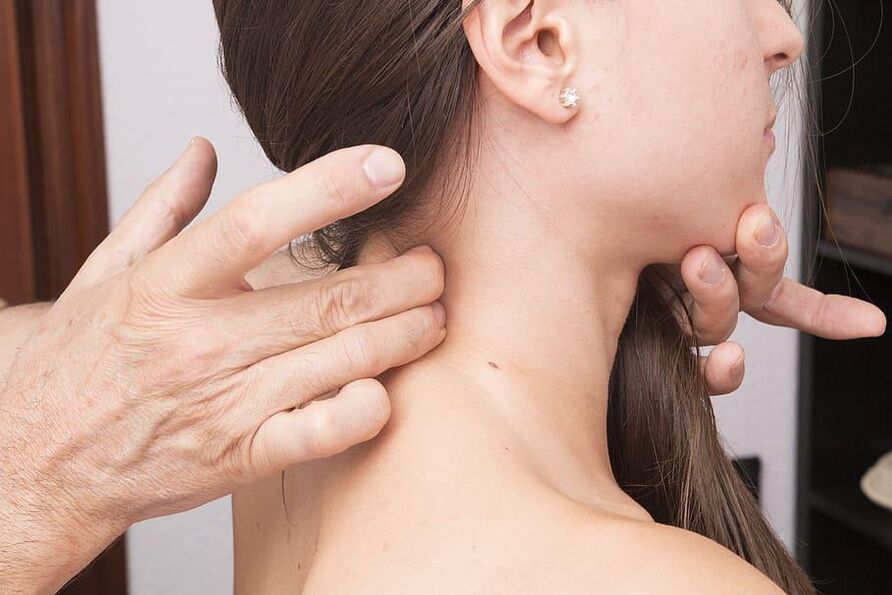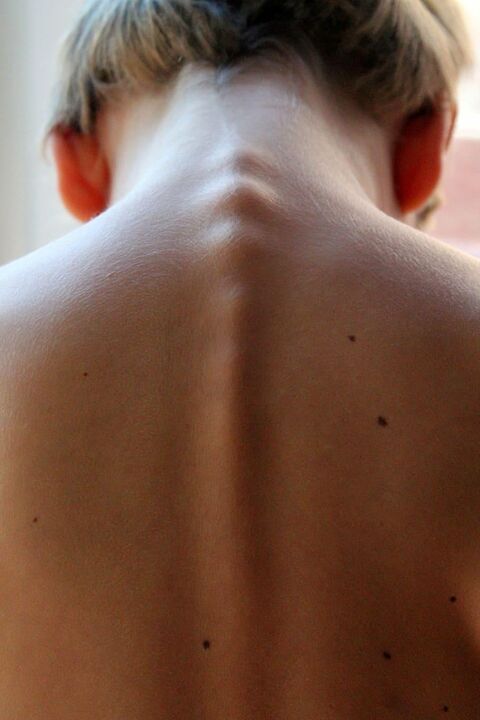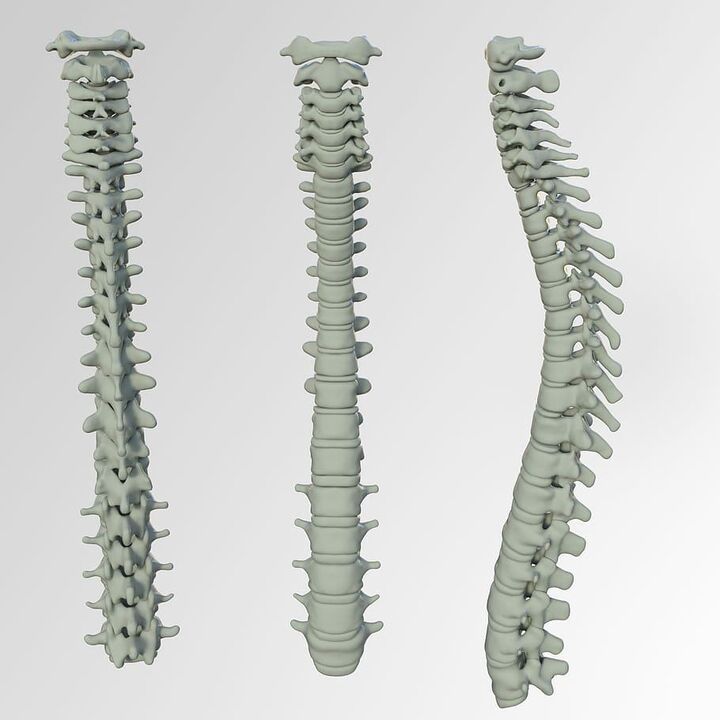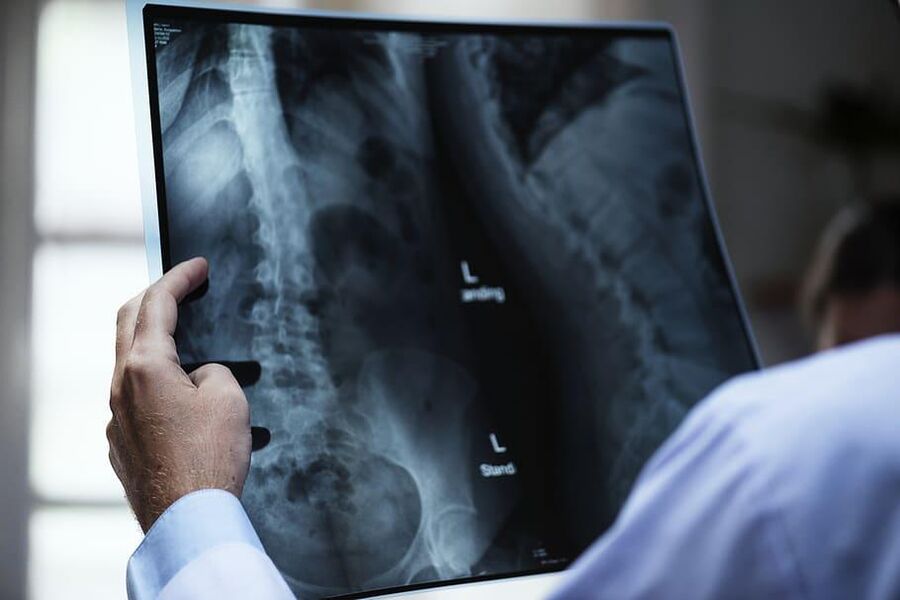Cervical osteochondrosis is a very common disease in the modern world. Many people have the initial stages, but they do not even suspect it. The widespread osteochondrosis of the neck was due to the fact that people were sitting better and moving less. Take a look at the causes of the development of an unpleasant disease and how to fight it.
What is the cervix osteochondrosis?
Thus, the cervix osteochondrosis is a degenerative-dynist disease of the cartilage tissue of the muscular bone system. The disease is characterized by abnormal changes in the structure of the cartilage, which lead to a violation of the anatomical structure of the spine, disrupt skeletal mobility and cause painful feelings. The disease can affect any part of the spine, but due to excessive mobility and miniature spinal size, the cervix is most often suffered from this pathology. The neck experiences impressive loads daily. The turn of the head and even the retention of the head causes the vertebrae and the intervertebral discs to function intensely. Outside regular exposure, intervertebral discs are thinner and micro fractures appear on them. Over time, their height decreases, they begin to change in thickness in a lesser way, and cease to perform their main function - depreciation of the vertebrae.
Causes of cervical osteochondrosis
The causes of the development of the disease are primarily the cause of the aging of the body and the development of bones and cartilage. The following causes of osteochondrosis can also be called:
- A violation of posture
- Reducing motor activity as a result of a sitting lifestyle
- The overweight which is the result of metabolic disorders can be loaded with intervertebral discs
- Hereditary factor
- Long -term physical activity
- the abnormalities of the spine
Cervical osteochondrosis symptoms
There are specific manifestations of cervical osteochondrosis. This is due to the anatomical properties of the cervical spine. Most often, patients complain of pain of various intensity and grow compared to a long stay in a situation. Other symptoms are often added to pain:
- Weakness in the upper limbs
- numbness and tingling hands
- stiffness while moving the head
- Dizziness (suggests that damaged elements have influenced the arteries)
- The numbness of the lips
- A sensation of coma in the throat
Cervical signs of osteochondrosis
In medicine, it is customary to separate signs of osteochondrosis, based on the nature of symptomatic manifestations, combined in a single syndrome. The 4 of these syndrome can be distinguished:
- Koreshka - indicates tight nerve beams that provoke severe pain and a set of autonomous symptoms (dizziness, weakness, sore throat);
- The spinal artery - damaged elements encourage the large spine artery, which is the cause of severe headache and dizziness;
- The spine - provokes the pain of its own neck;
- Cardial - Masks under the attack of angina pectoris, which is decreased by severe chest pain, similar to a heart attack.
Stages of the development of cervical osteochondrosis
1 degree osteochondrosis
This is characterized by the beginning of destroying intervertebral discs. The fibrous ring develops cracks, the strength and elasticity of the plate develop, and its height is reduced, which causes the nerve roots to glue. Typical painful pain. Occasionally 1 stage (preclinical) may lack such pain, and osteochondrosis has a moderate discomfort around the neck.
2 degrees osteochondrosis
If degree 1 osteochondrosis was not treated or treatment was not effective, then degrees 2 osteochondrosis is chronic. The pain becomes constant, the destruction and seal of the intervertebral disc continue, and leads to a small dislocation of the cervix. In the case of cervical osteochondrosis, the falling head syndrome may develop at this stage. This syndrome is characterized by severe pain and forcing a person to support the head in a fixed state to reduce pain.
3 degrees osteochondrosis
The fibrous ring is almost destroyed, leading to complications of osteochondrosis - the protrusion of the intervertebral disk or the intervertebral hernia. At 3 stages of osteochondrosis, the intensity of the pain may be reduced, as the affected cartilage tissue in the disc between the vertebrae is no longer there, which means there is no source of pain, but the nerve roots remain so the pain does not leave completely.
Diagnosis of the cervix osteochondrosis
If you suspect the presence of osteochondrosis of the cervix, you should contact a medical institution on time. A comprehensive diagnosis promotes the identification of the disease, its degree and understands the causes of pathology. Preliminary diagnosis is made based on control and palpation - osteochondrosis is detected in the cervical muscles, and in some cases the deformation of the spine is noticeable. After an objective diagnosis, the doctor will send the patient for further examination. The following diagnostic methods are used to confirm the diagnosis:
Preliminary diagnosis is made based on control and palpation - osteochondrosis is detected in the cervical muscles, and in some cases the deformation of the spine is noticeable. After an objective diagnosis, the doctor will send the patient for further examination. The following diagnostic methods are used to confirm the diagnosis:
- Magnetic resonance tomography
- Radiography (side and straight)
- Computer tomography
To determine the cause of the pathology, ultrasound examination of the nearby organs, the ECG of the heart, the duplex scanning of the blood vessels, the blood vessels and the urine can also be written.
Treatment of cervical osteochondrosis
Treatment of osteochondrosis requires an integrated approach. Analgesics are used to temporarily remove the pain, but the therapy is based on physical therapy and massage. Massage helps to relieve muscle hypertension, increasing the pain. The procedures also restore normal blood circulation, improving the supply of damaged tissues. Based on the results of the massage path, the voltage is removed from the cervical region and the load on the spine is redistributed. Drug treatment. Medicines relieve pain and inflammation, restore blood circulation and eliminate the cramps of the neck muscles. The following groups of drugs can be used for this: glucocorticosteroids, analgesics, muscle loosers, etc. Physiotherapy treatment. In addition to taking medicines near cervical muscles, it eliminates cramps and normalizes blood circulation, promotes physiotherapy: acupuncture, laser effect, magnetic therapy, UHF treatment, phonophoresis, etc.  Therapeutic gymnastics. Special physical exercises help the patient strengthen the muscle frame, adjust posture and improve blood supply to the upper spinal column. Surgery is required for advanced stages of osteocondrosis of the cervix or with insufficient efficiency of conservative methods.
Therapeutic gymnastics. Special physical exercises help the patient strengthen the muscle frame, adjust posture and improve blood supply to the upper spinal column. Surgery is required for advanced stages of osteocondrosis of the cervix or with insufficient efficiency of conservative methods.
Preventing cervical osteochondrosis
To prevent the cervical osteochondrosis, it is recommended that: be careful to take a five -minute break per hour when sitting and avoid cervical loads; Do not make sharp motion from the head, observe posture; Avoid hypothermia; Physical education, swimming; eat properly; The dream should be on a solid mattress and a low pillow, the bent angle of the neck should not be more than 15 degrees; After 25 years, avoid shock load (jump, run). In any case, when the symptoms of the disease appear - be careful to visit your doctor. Don't go alone!














































